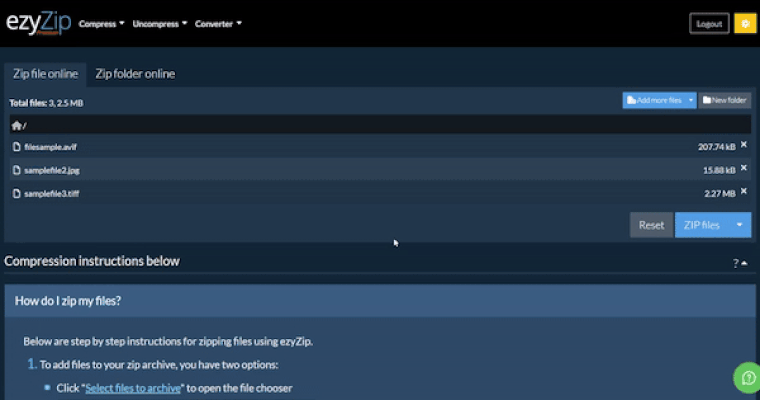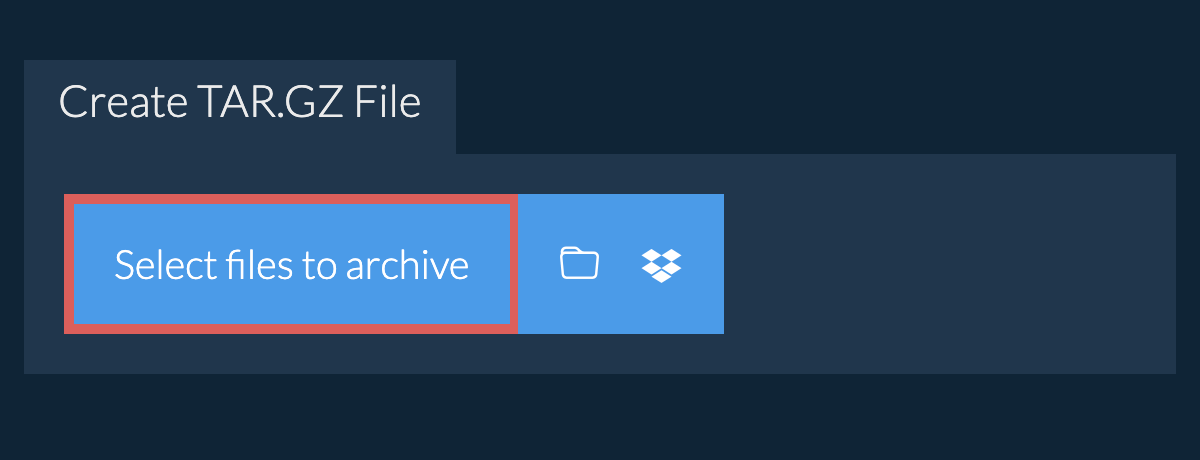Compression instructions below

Go Ad-Free with ezyZip Pro!
Enjoy all your favorite features, like seamless compression, conversion, and easy extraction, without the distraction of ads. Upgrade now for a faster, frustration-free experience!
Sign up!Video Instructions
How do I create tar.gz file?
- To add files to your tar.gz archive, you have two options:
- Click "Select files to archive" to open the file chooser

- Drag and drop files and folders directly onto ezyZip
- (Optional) Set the desired compression level by clicking the down arrow next to "Create TAR.GZ File" button.
- Click "Create TAR.GZ File". It will start compressing the files.

- Click "Save TAR.GZ File" to save the archive to selected destination folder.

How do I create tar.gz archive from a folder?

How do I convert Dropbox files to tar.gz?
- Click on the Dropbox logo () in the file selector button.

- The Dropbox file chooser will appear. You will need to authorise access to ezyZip the first time.
- Once you have selected the file(s), they will appear in the listing. Follow the instructions above to compress the files.
- To save the resulting TAR.GZ file to Dropbox, click on "Dropbox" dropdown under the "Save TAR.GZ File" button. This will require authorisation the first time you run it.
The file will be stored in /Apps/ezyZip folder.
What operating system and browser does ezyZip support?
We are continuously updating the system, so ensure you are using the latest version of one of the popular browsers or their variants. (e.g. Chrome, Firefox, Safari, Opera).
Please let us know via the feedback form if you have any issues.
What is a tar.gz file?
A TAR.GZ file is a combination of the TAR archive format and GZIP compression. First, files are bundled into a TAR archive, which preserves the directory structure and file metadata. Then, the TAR file is compressed using GZIP, significantly reducing its size. This format is commonly used in Unix and Linux environments for software distribution and backups.
TAR.GZ files are particularly popular because they offer the advantages of both archiving and compression in one format. By compressing the TAR file with GZIP, users can efficiently store or transmit large data sets while maintaining the integrity of the original file structure.
